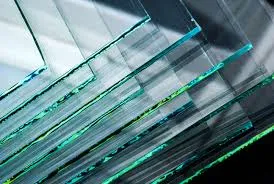Tempered Glass The Pinnacle of Safety and Durability
Tempered glass, also known as toughened glass, has transformed the landscape of architectural design, automotive applications, and a variety of other industries. This innovative material has gained immense popularity due to its superior strength and safety features, making it an ideal choice for a wide array of applications.
The process of manufacturing tempered glass involves heating it to over 600 degrees Celsius and then rapidly cooling it. This thermal treatment induces compressive stresses on the surface while creating tensile stresses in the interior. As a result, tempered glass is significantly stronger than standard glass, able to withstand impact and extreme temperatures, thus reducing the likelihood of breakage. In fact, it can be up to five times stronger than untreated glass. This quality makes tempered glass an optimal choice for use in windows, doors, and facades, where safety is paramount.
One of the most notable characteristics of tempered glass is its ability to crumble into small, blunt pieces when shattered, as opposed to sharp shards. This feature greatly enhances safety, particularly in environments such as schools, hospitals, and residential buildings. The risk of injury from broken glass is reduced, making it a preferred material for public spaces and high-traffic areas.
tempered glass
In addition to its safety features, tempered glass offers excellent thermal resistance. It can withstand drastic changes in temperature without warping or breaking, making it suitable for use in regions with extreme weather conditions. This thermal stability is particularly beneficial in the automotive industry, where tempered glass is commonly used in side and rear windows, providing both safety and comfort for passengers.
The aesthetic appeal of tempered glass cannot be overlooked. Its clarity and ability to be customized to various shapes and sizes make it a favored choice among architects and designers. Whether used in modern office buildings, residential homes, or as decorative elements, tempered glass enhances the visual appeal of any project.
Moreover, tempered glass is environmentally friendly. It is fully recyclable and contributes to energy efficiency when used in buildings. Many energy-efficient windows incorporate tempered glass, allowing for natural light while reducing energy consumption.
In conclusion, tempered glass remains a versatile and indispensable material in diverse applications. Its unique combination of safety, durability, thermal resistance, and aesthetic appeal positions it as a leading choice in modern construction and design. As technology advances, we can expect even more innovative uses and advancements in tempered glass applications, solidifying its place as a fundamental element in our daily lives.
 Afrikaans
Afrikaans  Albanian
Albanian  Amharic
Amharic  Arabic
Arabic  Armenian
Armenian  Azerbaijani
Azerbaijani  Basque
Basque  Belarusian
Belarusian  Bengali
Bengali  Bosnian
Bosnian  Bulgarian
Bulgarian  Catalan
Catalan  Cebuano
Cebuano  Corsican
Corsican  Croatian
Croatian  Czech
Czech  Danish
Danish  Dutch
Dutch  English
English  Esperanto
Esperanto  Estonian
Estonian  Finnish
Finnish  French
French  Frisian
Frisian  Galician
Galician  Georgian
Georgian  German
German  Greek
Greek  Gujarati
Gujarati  Haitian Creole
Haitian Creole  hausa
hausa  hawaiian
hawaiian  Hebrew
Hebrew  Hindi
Hindi  Miao
Miao  Hungarian
Hungarian  Icelandic
Icelandic  igbo
igbo  Indonesian
Indonesian  irish
irish  Italian
Italian  Japanese
Japanese  Javanese
Javanese  Kannada
Kannada  kazakh
kazakh  Khmer
Khmer  Rwandese
Rwandese  Korean
Korean  Kurdish
Kurdish  Kyrgyz
Kyrgyz  Lao
Lao  Latin
Latin  Latvian
Latvian  Lithuanian
Lithuanian  Luxembourgish
Luxembourgish  Macedonian
Macedonian  Malgashi
Malgashi  Malay
Malay  Malayalam
Malayalam  Maltese
Maltese  Maori
Maori  Marathi
Marathi  Mongolian
Mongolian  Myanmar
Myanmar  Nepali
Nepali  Norwegian
Norwegian  Norwegian
Norwegian  Occitan
Occitan  Pashto
Pashto  Persian
Persian  Polish
Polish  Portuguese
Portuguese  Punjabi
Punjabi  Romanian
Romanian  Russian
Russian  Samoan
Samoan  Scottish Gaelic
Scottish Gaelic  Serbian
Serbian  Sesotho
Sesotho  Shona
Shona  Sindhi
Sindhi  Sinhala
Sinhala  Slovak
Slovak  Slovenian
Slovenian  Somali
Somali  Spanish
Spanish  Sundanese
Sundanese  Swahili
Swahili  Swedish
Swedish  Tagalog
Tagalog  Tajik
Tajik  Tamil
Tamil  Tatar
Tatar  Telugu
Telugu  Thai
Thai  Turkish
Turkish  Turkmen
Turkmen  Ukrainian
Ukrainian  Urdu
Urdu  Uighur
Uighur  Uzbek
Uzbek  Vietnamese
Vietnamese  Welsh
Welsh  Bantu
Bantu  Yiddish
Yiddish  Yoruba
Yoruba  Zulu
Zulu 

